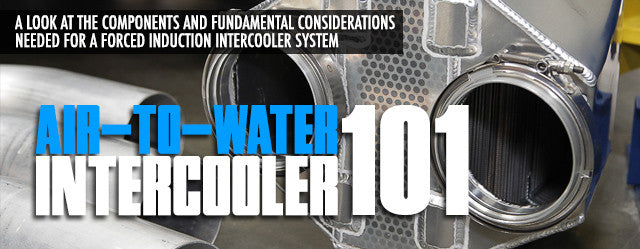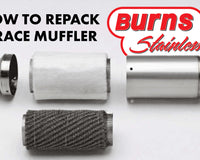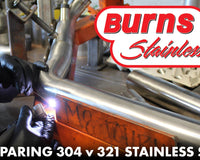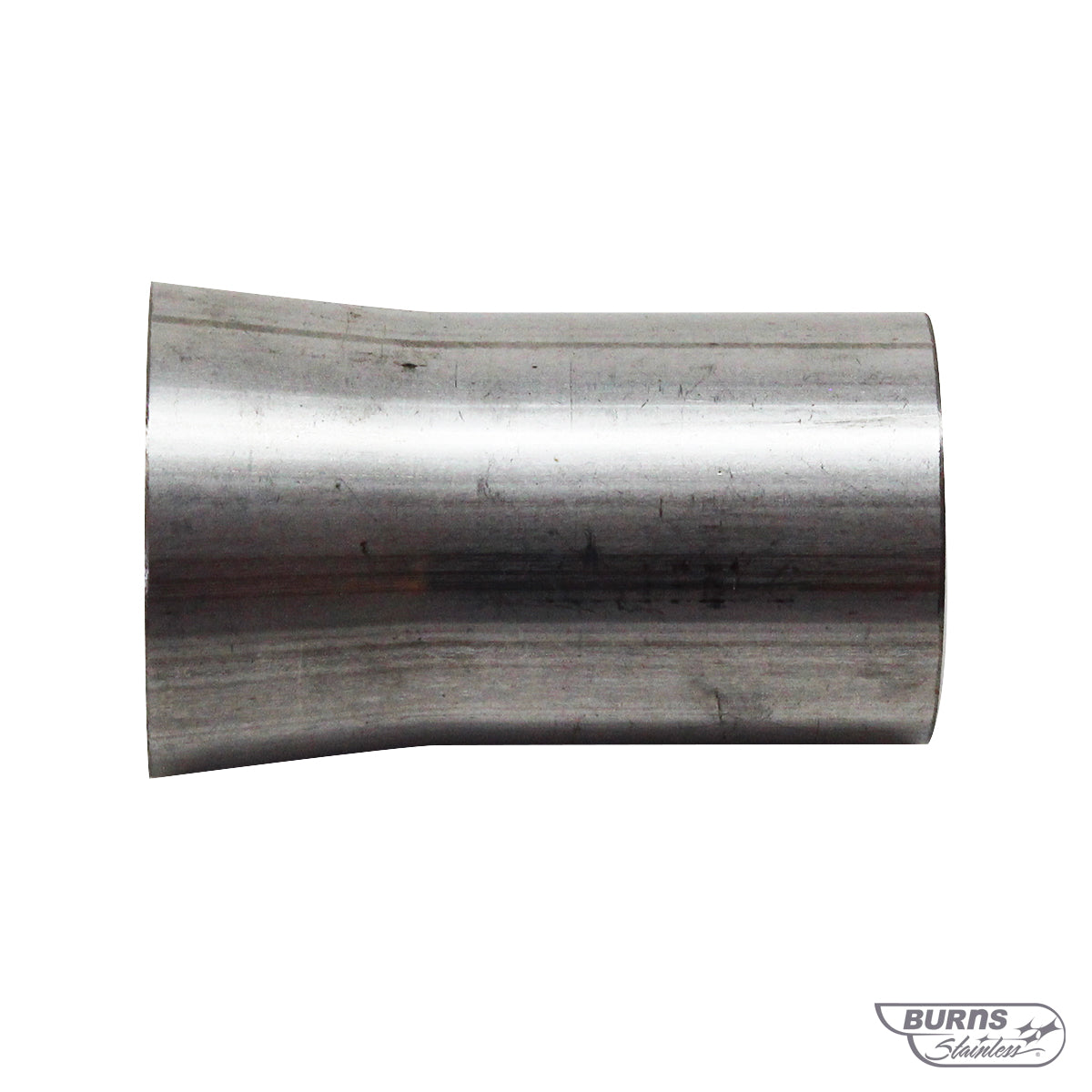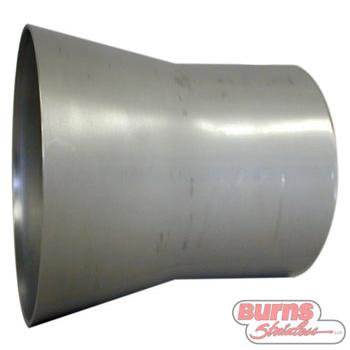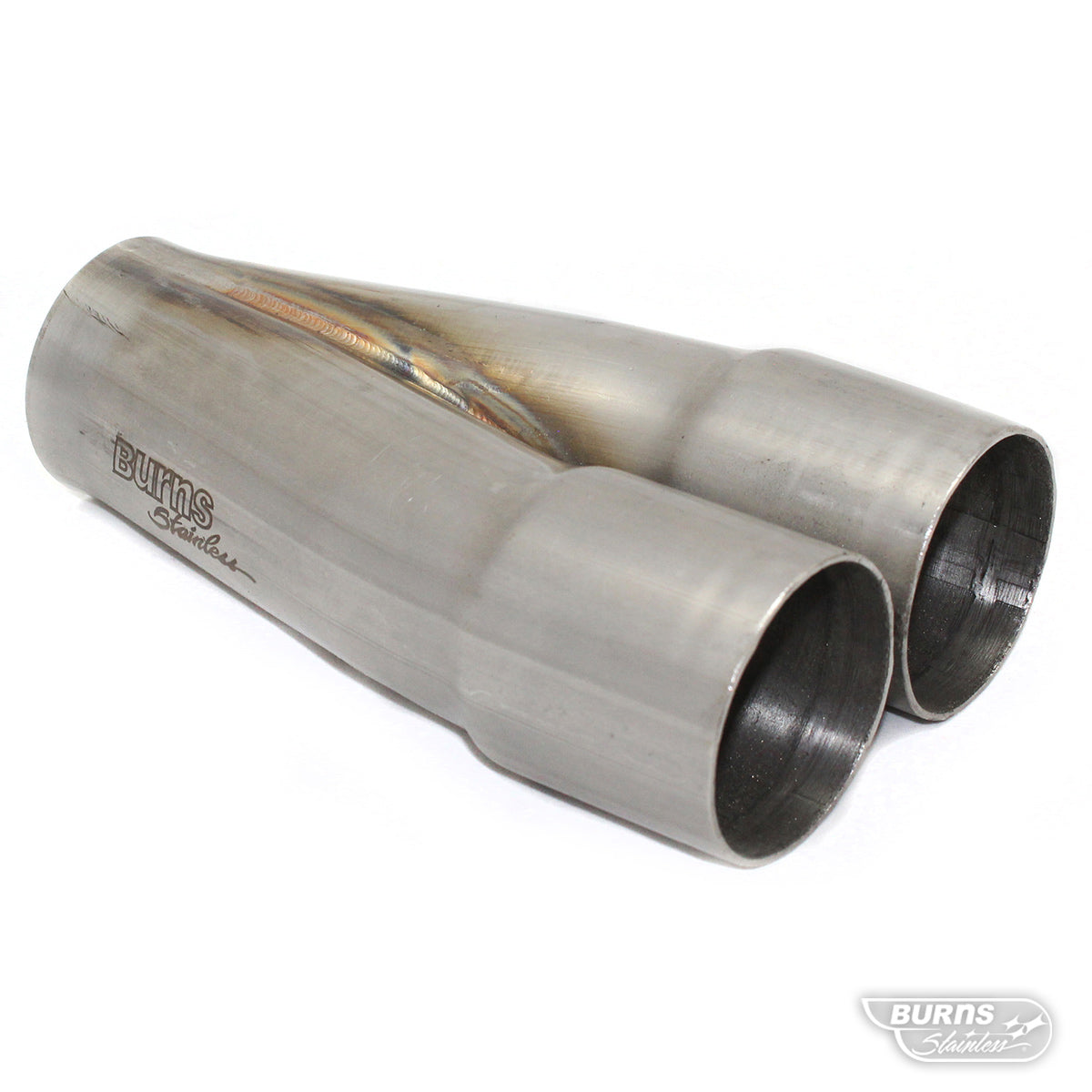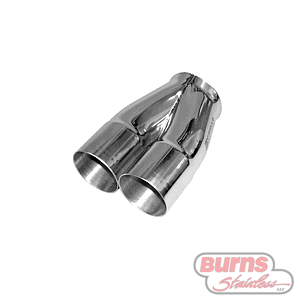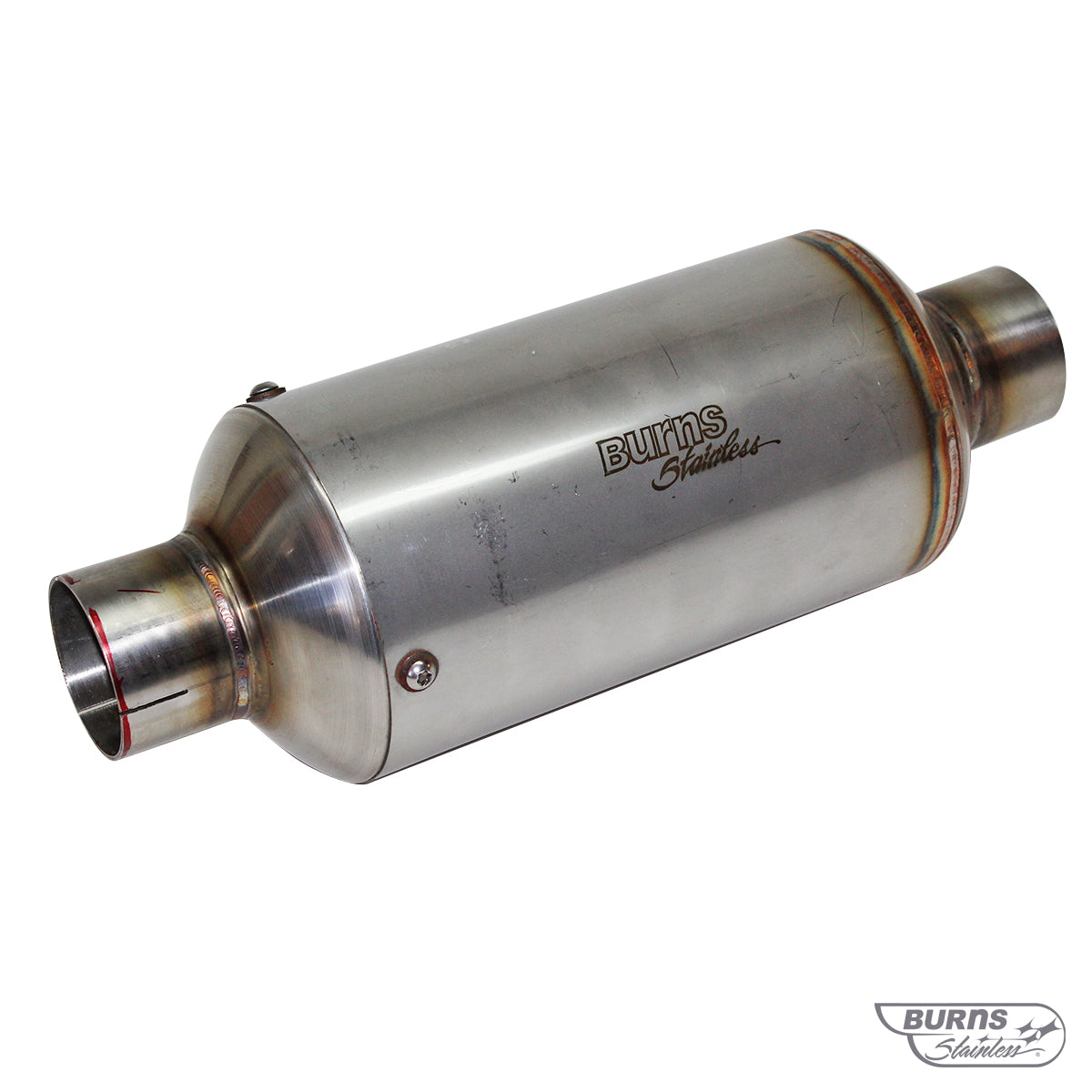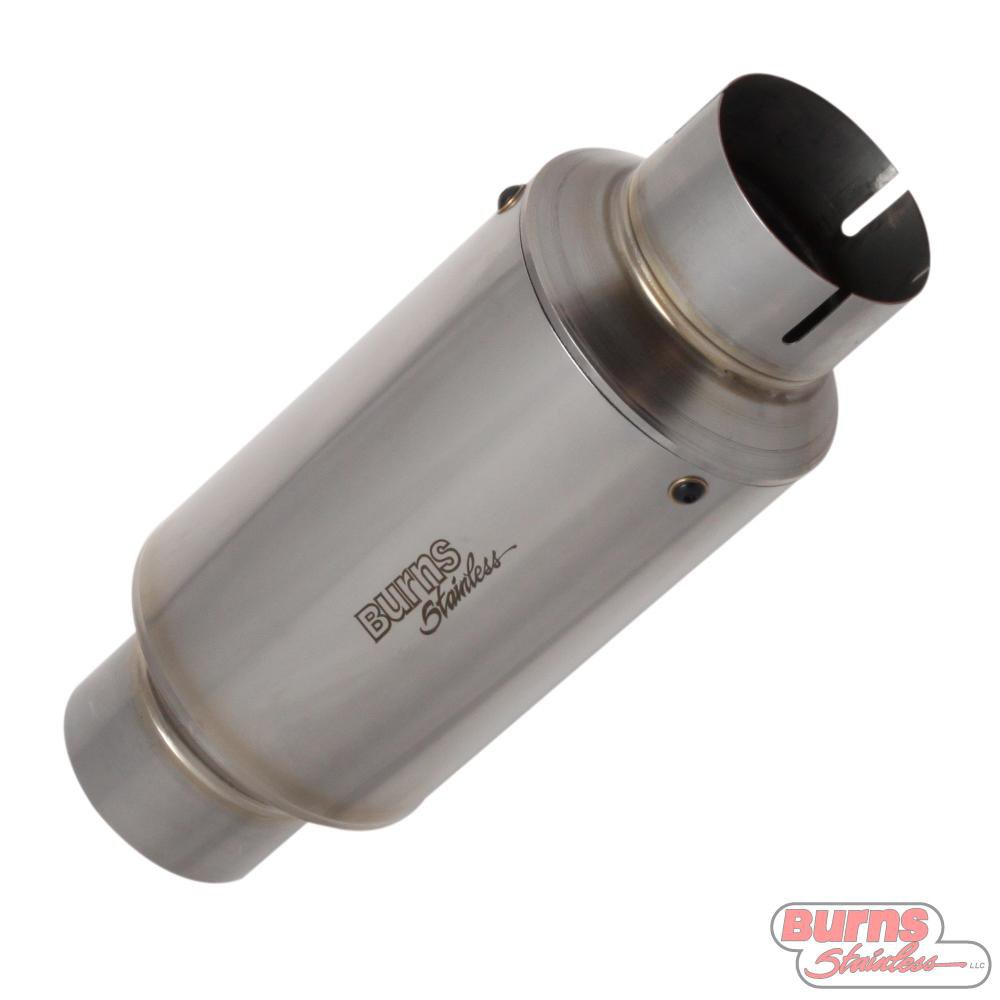When it comes to turbocharged or supercharged engines, running on gasoline dictates that an intercooler will almost certainly be part of the equation. But what an intercooler actually does, and how to determine what parts you’d need for a build can sometimes be a bit of a mystery.
At its essence, an intercooler is a heat exchanger. In an air-to-water intercooler, the heat exchange occurs between the air coming in and the water flowing through the intercooler–the heat from your charge pipes is transferred to the water, and cooler and denser air is sent through the other side. One of the key benefits to this type of design is that, unlike air-to-air intercoolers, an air-to-water intercooler can be mounted virtually anywhere along the charge piping route, provided there’s a means to send water to and from it.

A look at the Garrett cores that Chiseled Performance uses on their 1000 hp builds.
However, it’s also a more complex design than an air-to-air intercooler system, requiring additional components like tubing and fittings for the water to flow through, and this is where considerations must be taken not only for reliability, but also for maximizing flow to maintain the intercooler’s efficiency.
The job of the intercooler is to take charged air and make it denser so that more can be fit into the cylinder for combustion. Superchargers and turbochargers generate heat when they create pressure required to make the charge of air denser. That heat equates to hot air that is less dense, which in turn means less air for the motor to work with on each combustion, and results in less power.
Additionally, that heat also results in higher cylinder temperature which can result in pre-detonation in the combustion cycle, robbing the engine of additional potential power. An intercooler helps to keep those cylinder temperatures low, and by doing so, allows you to keep the engine timing up, gaining even more power in the process.

To maximize the amount of power you can gain–and reliably maintain–with your forced induction system, the key is to keep your intercooler as efficient as possible, and with an air-to-water intercooler system, that means selecting your core, tubing and fittings properly to maintain optimum flow through the system, and sizing your components appropriately for the type of build you’re going to be using them with.
Burns Stainless, known for their Stainless Steel products has a line of Aluminum Tubing just for this application.
To help us determine how to accomplish this, we spoke with the folks at Garrett Turbo, Chiseled Performance, Burns Stainless, and Fragola Performance to discuss how each of their companies’ products fit into the equation and how best to determine what you need.
Assessing The Situation
The first, and most obvious consideration is how much space you have to work with. Determining where you want to mount the intercooler and how much room you’ll have in that space is a logical first step.




Chiseled Performance puts together their 3,000 horsepower builds with three of the Garrett 1,000 horsepower cores. The water fittings measure 1-¼ inch NPT (National Pipe Thread) and can face forward or rear.
“I mainly ask what the setup is. What is the horsepower goal? What’s the maximum amount of boost you want to run? Is this going to be a street car or is it for racing only?” says Robert Rojas of Chiseled Performance.
You’ll want to give some consideration to the size of the blower or turbocharger, which will dictate the charge air side parameters like the charge air mass flow, the temperature of the air exiting the unit, and the air temperature at the inlet of the intercooler.
For 0-60 mph performance, you want the pressure drop as low as possible to reduce turbo lag and improve engine responsiveness. – Steven Broadbent, Garrett Performance
“You have to take into consideration the intended driving conditions,” says Steven Broadbent, engineering manager of Thermal Products for Turbo by Garrett. “For 0 to 60 mph performance, you want the pressure drop as low as possible to reduce turbo lag and improve engine responsiveness. For track duty, where you have continuous high speeds and loads, pressure drop is still considered, but it’s not as much of a concern.”
Flow Rate
When it comes to developing the latest tech, dialing in the efficiency in their products comes down to flow analysis for Garrett. “We’ve been increasing use of computer analysis software to optimize flow distribution and minimize pressure drop. These programs also help balance the heat rejection capabilities of both coolers in the system (the low temp radiator and the intercooler itself) to optimize performance,” Broadbent explains.
The type of pump used for the low temp radiator will dictate the flow rate based on how much pressure drop there is in the entire system, and the intercooler makes up a fairly significant portion of this and must be considered. “Lower pressure drop means more flow, higher pressure drop means less flow,” says Broadbent.


As is typically the case in all things performance, heat is the enemy of efficiency, so ensuring the system has an adequate flow rate to keep temperatures down is key.
Additionally, the coolant temperatures at the inlet of the intercooler are another factor to consider, and is largely dictated by the size and performance of the low temp radiator in the system–an undersized LTR will have a negative impact on the performance of an air to water system by not providing cold enough coolant to drive the desired heat transfer in the intercooler.
Proper Tubing Sizes

The dimensions of the tubing used on your system can have a profound effect on efficiency as well. The diameter should never exceed that of the outlet of the intercooler and the intake of the throttle body.
Placement
We’ve seen intercoolers mounted in a lot of different places – sometimes in the dash, other builds will place them closer to the passenger seat area or even further back inside the car. It may seem arbitrary–perhaps based on the best spot for access or even for aesthetic considerations, but where you mount the intercooler can have a big impact on its performance.
“It is best practice and will drive the best system response by reducing the complexity of the system,” Broadbent explains. “The shorter all of the lines are, the better–the more volume you have to contend with, the more turbo lag there will be with the system. Longer and more complex air lines will increase pressure drop and reduced air density, which will have a negative impact on the power generation of the engine.”
Rojas tells us that in most of the high horsepower builds he sees, the determining factor is often based on space constraints within the car. “Most of the air-to-water coolers are installed in the passenger seat area or the rear seat area, but some, like the IC2000, can be installed in the dash on some cars. Some also install the coolers up front in the engine bay area if space allows.”



Complexity often equates to lag when it comes to the plumbing in a forced induction setup. But in high horsepower setups built for the track, dimensional constraints often dictate placement, and low RPM responsiveness is less of a priority.
Optimizing Flow
Much like the air side of the equation, the best route to optimizing flow through the system is to reduce complexity. Longer lines with more sharp bends will increase pressure drop, which in turn will result in reduced coolant flow and a reduced cooling capacity for the low temp radiator and intercooler.
“We use Garrett cores for the 2,000 to 4,000 horsepower units and a Bell core for the IC2500. These, of course, require a water tank and pump to cool them. Our main water tank sizes are five and seven gallons, although we can do any custom size to accommodate the setup,” Rojas says.


 Chiseled Performance systems feature an exclusive one-piece air tank design and four-inch inlets and outlets. The IC2000 (left) is rated up to 2,000 horsepower, the IC3000 to 3,000, and the IC400 is (you guessed it) rated to 4,000 ponies.
Chiseled Performance systems feature an exclusive one-piece air tank design and four-inch inlets and outlets. The IC2000 (left) is rated up to 2,000 horsepower, the IC3000 to 3,000, and the IC400 is (you guessed it) rated to 4,000 ponies.
As far as pumps go, Rojas has some specific guidelines for both line diameter and outlet neck configuration. “We use Rule intank pumps for our builds as they work really well and clean up the install. The Rule 2000 pump is for the IC2000 and IC2500 with one-inch minimum lines, and the Rule 3700 pump is for the IC3000 and IC4000 coolers, with minimum 1 1/4-inch lines. These cores benefit from the extra line size and these pumps do not like to have the outlets necked down–it just kills their flow,” Rojas explained.
"Bigger tubing does help in air flow and cooling, but can be hard to package in the cars. – Robert Rojas, Chiseled Performance"
As far as intercooler inlet and outlet sizes?
“Generally all of our setups come with 4-inch in and out as standard, although we have done some 5-inch in and out for customers wanting to max out their combination. The bigger tubing does help in air flow and cooling, but can be hard to package in the cars,” says Rojas. “Cars are making 4000-plus horsepower on 4-inch with no issues, but these are big cubic inch, all-out motors. We’ve done some intercoolers with the 5-inch option on smaller cubic inch setups that use turbochargers or superchargers. These builds are about squeezing every last horsepower available from the setup with the least amount of pressure loss.”
Rojas added that the larger tubing will help in air flow and pressure drop, especially if there are numerous bends throughout the system. The added diameter helps the air will flow smoother in the bends, which in turn creates less heat. “It is mostly effective in the outlet side of the intercooler, since all that compressed air can flow out of the intercooler easier and quicker.”
But there’s one major drawback that prevents most builders from going big. “The problem is that all that 5-inch tubing takes up a lot of space–the radius in the bends are wide and it can be very challenging to plumb in most cars.”

Here’s a look at the size differences between Burns Stainless 3.5-inch and 4-inch tubing. As you can imagine, when routing this tubing throughout the car the size discrepancies can start to add up quickly, making the amount of space you have to work with and the number of bends required in the system increasing concerns.
For that reason, opting for a 5-inch setup is a rare occurrence for Chiseled Performance’s builds. “I would say 99 percent of the intercoolers we’ve built are setup for 4-inch setups,” Rojas added.
Tubing, Clamps And Hoses
So how do you go about choosing the right tubing and clamps for the build? The method of connection in between components in your setup can have a big effect on performance as well. We decided to work with Burns Stainless on the tubing. Despite their name, Burns offers a wide variety of aluminum tubing, including 3-inch to 5-inch diameters, in a variety of configs; from straight to 45 degree to 90-degree bends.

While many companies utilize lower quality 6063 aluminum for their intercooler tubing, Burns Stainless provided mandrel bent piping in 6061 aluminum.
Obviously, whenever possible, you want to select the tube sizes that match the rest of the components in the system–but no larger than the outlet of the intercooler or intake of the throttle body, of course. Sadly, the world is an imperfect place, and with complex builds like these, sometimes compromise is required. That’s where transition cones come in.
We picked 5.0-inch tubing for our application as we were looking for the best possible performance, lowest flow losses, and maximum horsepower — and we were willing to deal with the packaging challenges.
Burns supplied us with 15-feet of 5.0-inch aluminum tubing, 6 sections of 90-degree 5.0-inch J bends, and an assortment of Burns V-band clamps. The quality of the Burns aluminum hardware was outstanding.
“The more ‘hard’ plumbing, the better,” says Vince Roman, technical director for Burns Stainless. Transition cones are used to mate up tubing and inlet/outlets of differing sizes. While silicon hose is a quick fix, it’s far from ideal, so whenever possible, Roman recommends using aluminum cones to connect those components. Because we were running all 5-inch, we didn’t really have an issue with needing transitions. But in many applications, it would be appropriate.
“Aluminum not only provides benefits like reduced heat, increased pressure tolerance, and overall reliability, you also get the added benefit of better flow from smooth walls inside the connectors,” Roman added.

The aluminum V-band flanges are Burns' own design and utilize an o-ring seal.
For this build, Burns provided aluminum V-band flanges to connect the aluminum intercooler piping. These flanges are a cost effective alternative to the Wiggins Clamp, where joint flexibility is not required. The flanges are CNC-machined from billet 6061 aluminum and feature an O-ring groove for sealing. The weld-on flanges are available for 2-1/2, 3, 3-1/2, 4, and 5-inch tubing sizes, and utilize 304SS V-Band clamps for assembly. The flanges may be purchased individually or in assemblies including the clamp.

Alternatively, another method to make these connections is with a Wiggins or Hydraflow clamp. In terms of the latter, Hydraflow clamps offer 1/4-inch of axial flexibility, along with approximately four degrees of angular movement to allow for minor joint misalignment and are compatible with industry-standard tubing ferrules; essentially offering the benefits of silicon compliance but with an extremely reliable seal, benefiting both installation and maintenance.
What about the hoses you’ll need for the build? That’s where Fragola Performance Systems comes in. They offer two different series of hoses in a Push-Lok configuration. The 8000 series hose has a temperature range of up to 300 degrees and has an inner layer of synthetic PKR that’s covered with a fiber braid reinforcement. The hose is then wrapped with a weather resistant textile cover which helps with abrasion resistance. “This hose will more than meet the demand that any intercooler plumbing might bring,” says Fragola’s Jeff Stacy. “These assemblies are also half the weight of a stainless assembly,” he added.




With a working temperature range of up to 300 degrees, maximum bursting pressure exceeding 200 psi and a vacuum rating higher than 14-inch hg., the 8000 series hose from Fragola can handle just about anything you can throw at it.
New for 2015, Fragola has come out with a -20 Push-Lok hose and fittings. Similar to the 8700 series black hose, but in an 1 1/4-inch size, this hose can move a tremendous amount of water–ideal for use with a high volume intercooler.
Fragola has other options as well. The 8600 and 8700 series hoses have a max pressure of 250 psi. The synthetic rubber tube is covered with one layer of textile braid that’s combined with an outer layer of synthetic colored rubber. These do not feature an outer cover like the 8000 series, but they are available in sizes ranging from -4 to -16, whereas the 8000 series is offered in sizes from -4 to -12.


The 8600 and 8700 series lines have an even higher pressure threshold and come in a wide array of sizes, though they lack the outer cover.
In terms of hose ends, Fragola has a solution there, too. It should come as little surprise that their 8000 series Push-Lite hose ends are a perfect fit for their Push-Lok hose options. These hose ends are available in size -4 to -16 in straight, 30, 45, 60, 90, 120, 150, and 180 degrees, and in straight and 90 degree configurations in -20.
It is clear that there is an array of elements that go into the equation of an air-to-water intercooler setup, but with these fundamentals you can dive into the process with an idea of what you need and where to source it from.

